15 Animals That Look Like Raccoons and What Makes Them So Similar
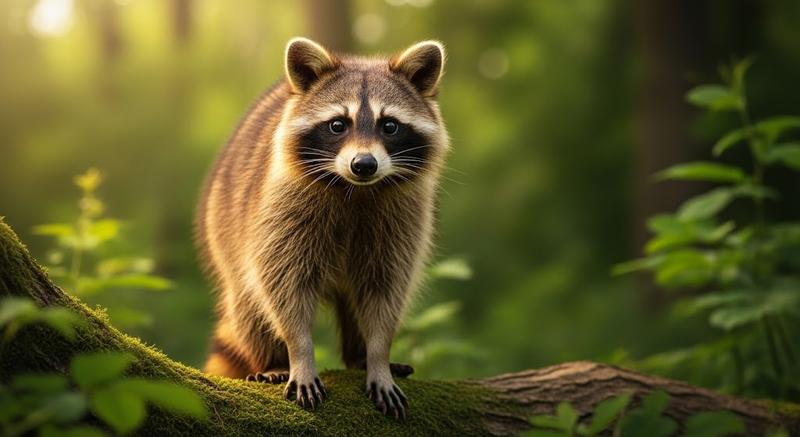
Many animals look like raccoons at first glance—thanks to shared features like ringed tails, masked eyes, and nocturnal habits. Some of these creatures are close biological relatives, while others just happen to resemble raccoons through convergent evolution. In this guide, we’ll introduce you to 15 animals that look like raccoons and explain what exactly they have in common, from behavior and habitat to physical traits and family lineage.
Whether you’re trying to identify a mysterious animal you spotted in the wild or simply curious about raccoon doppelgängers, this list offers photos, facts, and comparisons to help you tell them apart.
Animals That Look Like Raccoons (with Pictures and Facts)
These species aren’t all closely related to raccoons, but they mimic their appearance with strikingly similar markings, tails, and body shapes.
Animals That Share Raccoon-Like Features
Coati - raccoon family, social daytime behavior
Coatis, also known as coatimundis, are native to Central and South America and are actual members of the raccoon family (Procyonidae). With long ringed tails, pointed snouts, and masked faces, they often get mistaken for raccoons. Unlike their more solitary cousins, coatis are often seen in social groups and are active during the day.
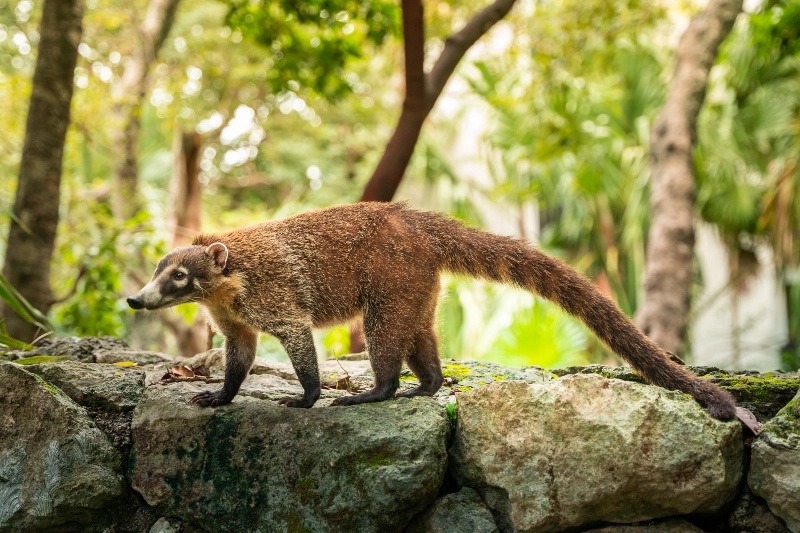
Ringtail (Ringtail cat) - nocturnal, masked face
Despite the name, the ringtail is neither a cat nor a true raccoon—but it is part of the raccoon family. With enormous eyes for nocturnal vision, a long bushy striped tail, and agile climbing skills, this animal is common in the southwestern U.S. and frequently confused with raccoons in desert or canyon areas.
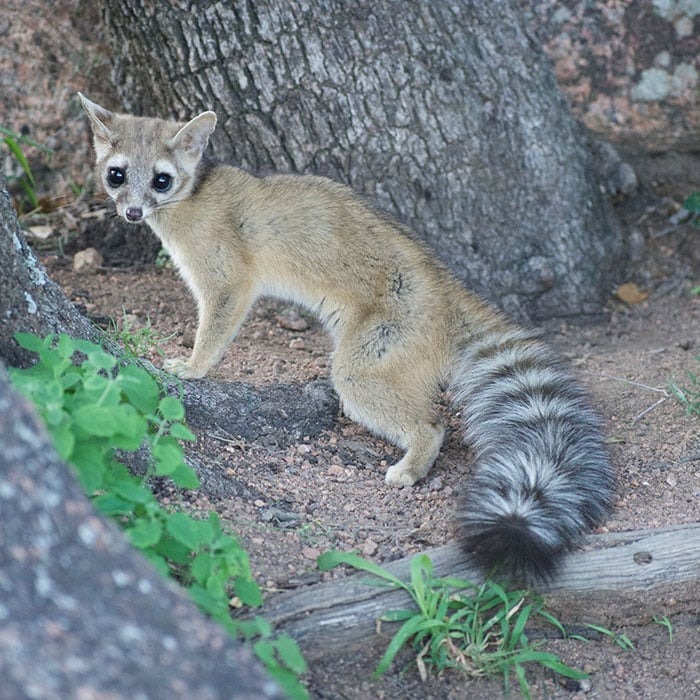
Tanuki (Japanese raccoon dog) - raccoon look, canid
The tanuki looks like a raccoon with its masked face and stocky frame, but it's actually a canid—a relative of foxes and wolves. Native to Japan and parts of East Asia, tanukis feature heavily in local folklore and are known for their mischievous and magical reputation. Their resemblance to raccoons is uncanny, though they aren’t related at all.
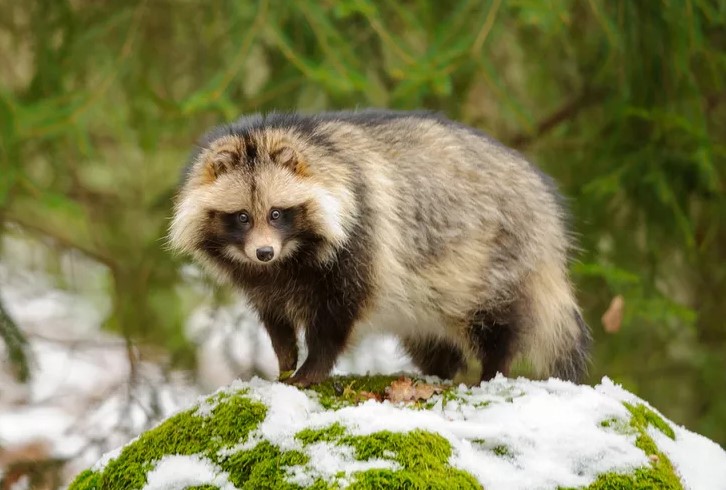
Red Panda - ringed tail, facial mask
Red pandas may be distant relatives of raccoons and are sometimes even referred to as “firefoxes.” These tree-dwelling animals from the Himalayan region have ringed tails and reddish-brown fur, and they sport a facial mask that echoes the raccoon look. Despite their name, they are more closely related to skunks and weasels than the giant panda.
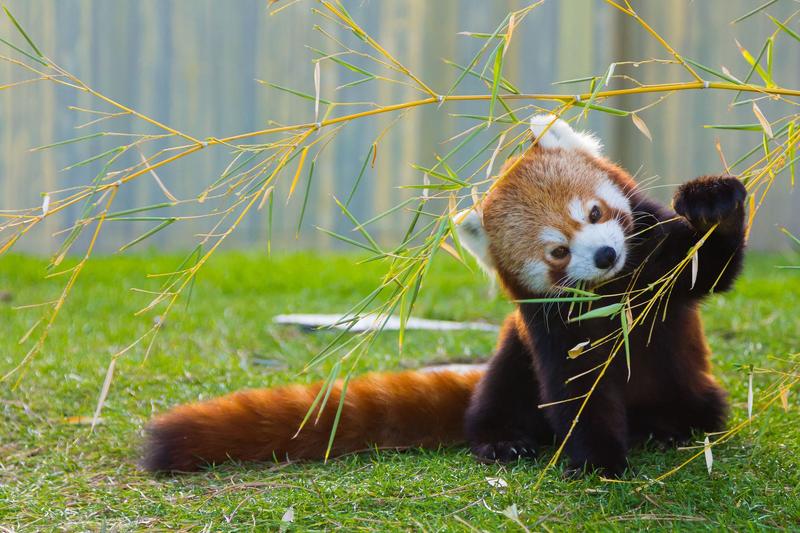
Kinkajou - arboreal, nocturnal habits
Kinkajous are small, arboreal mammals with prehensile tails and large eyes. Also, members of the Procyonidae family are often seen high in rainforest canopies. Their rounded faces and nocturnal habits can easily lead to confusion with raccoons, especially when spotted at night.
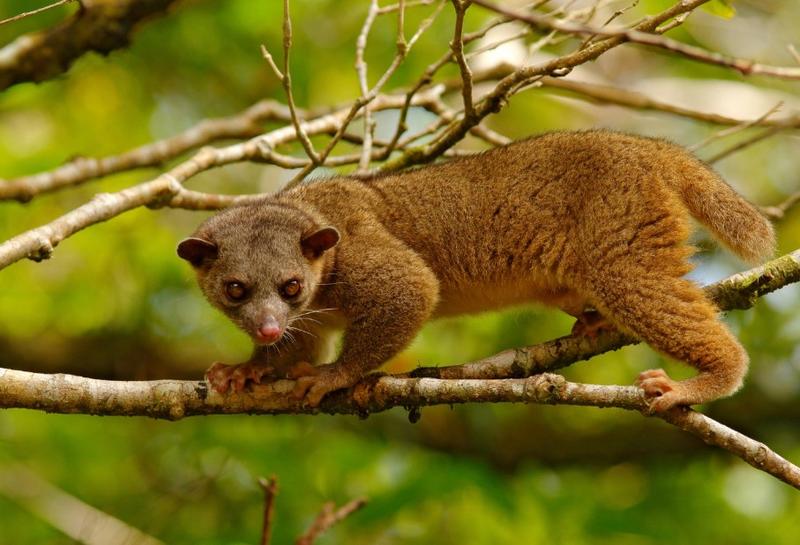
Crab-eating Raccoon - nearly identical, semi-aquatic
This species lives in mangrove swamps and tropical forests in Central and South America. While nearly identical in appearance to the North American raccoon, the crab-eating raccoon has slightly longer legs and webbed feet, making it better suited for a semi-aquatic lifestyle.
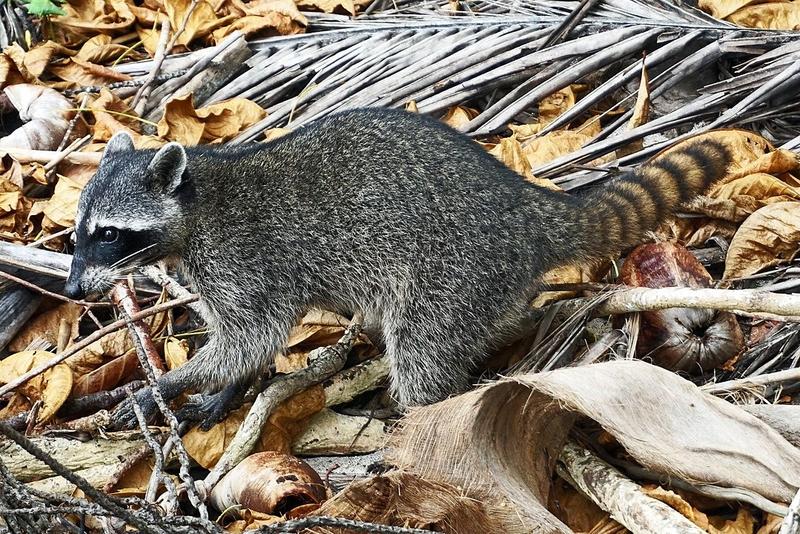
Close biological relatives of the raccoon
These animals are true raccoon cousins and share genetic ties, behavior patterns, and habitat preferences.
Olingo - sleek, tree-dwelling
The olingo is a lesser-known raccoon relative found in Central and South America. Sleek and agile, it resembles a kinkajou but has no prehensile tail. With big eyes, soft fur, and a quiet demeanor, it’s one of the raccoon family’s most elusive members.

Cacomistle - tree-dwelling, striped tail
Closely related to the ringtail, the cacomistle is a tree-dwelling mammal with a long tail and bold facial markings. Native to Mexico and Central America, it’s often mistaken for a raccoon due to its size and striped tail, but it tends to be more elusive and solitary.
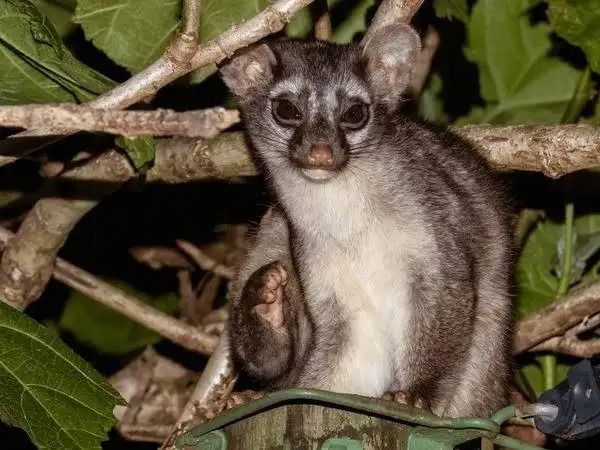
Olinguito — recently discovered, Andes cloud forest
The olinguito, a small tree-dwelling mammal discovered as a distinct species in 2013, is one of the raccoon’s closest relatives. With a rounded face, large eyes, and a long, bushy tail, it looks like a cross between a raccoon and a domestic cat. Native to the cloud forests of the Andes in Ecuador and Colombia, the olinguito is nocturnal and primarily feeds on fruit, nectar, and insects. Its adorable appearance and mask-like facial markings often lead people to mistake it for a miniature raccoon.
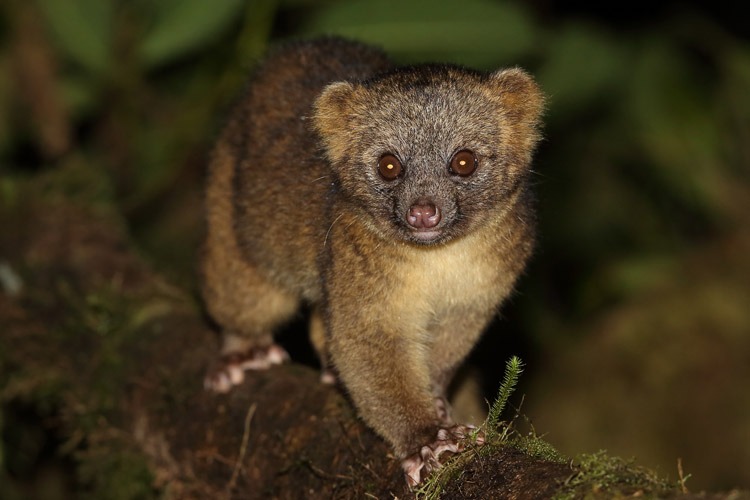
Animals commonly mistaken for raccoons
These animals aren’t related to raccoons but share physical or behavioral traits that cause confusion.
Badger - burrowing, striped face
Badgers have distinctive white face stripes, a low profile, and a robust build. While they don’t have a ringed tail or a raccoon’s face mask, their fur pattern and burrowing behavior can cause mistaken identity—especially in low light or from a distance.
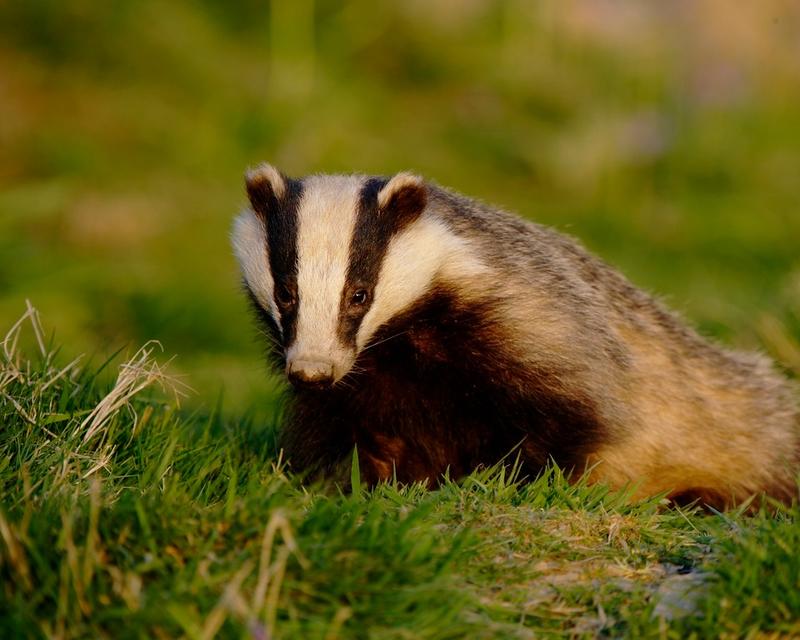
Skunk — similar size & behavior
With a bushy tail, similar size, and nocturnal lifestyle, skunks are often misidentified as raccoons. While their black-and-white coloring is different, their hunched posture and scavenging habits add to the confusion—until the spray comes out.
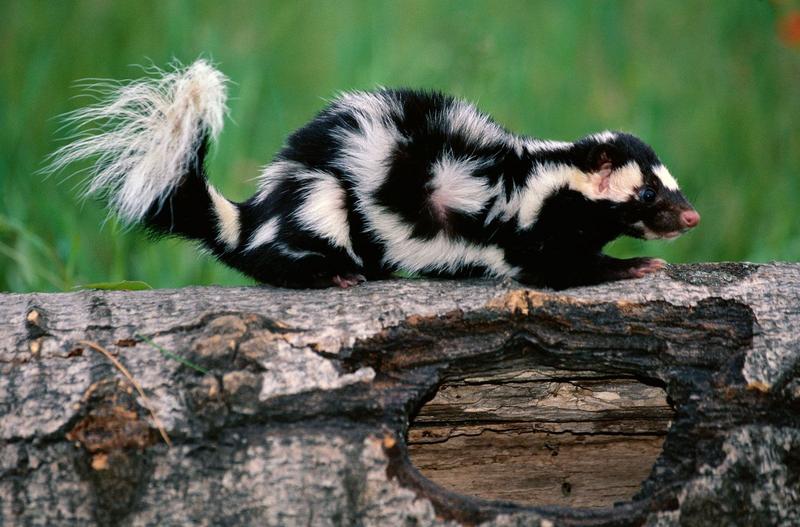
Civet - ringed tails, masked eyes
Found in Asia and Africa, civets have long bodies, masked faces, and ringed tails. They’re part of the Viverridae family and play an important role in ecosystems as seed dispersers. Their resemblance to raccoons is largely visual, not genetic.

Wolverine - powerful, mask-like face
Though much larger and more powerful, wolverines can be mistaken for raccoons at a glance due to their mask-like facial fur and broad stance. These solitary animals inhabit northern boreal forests and are known for their strength and endurance.
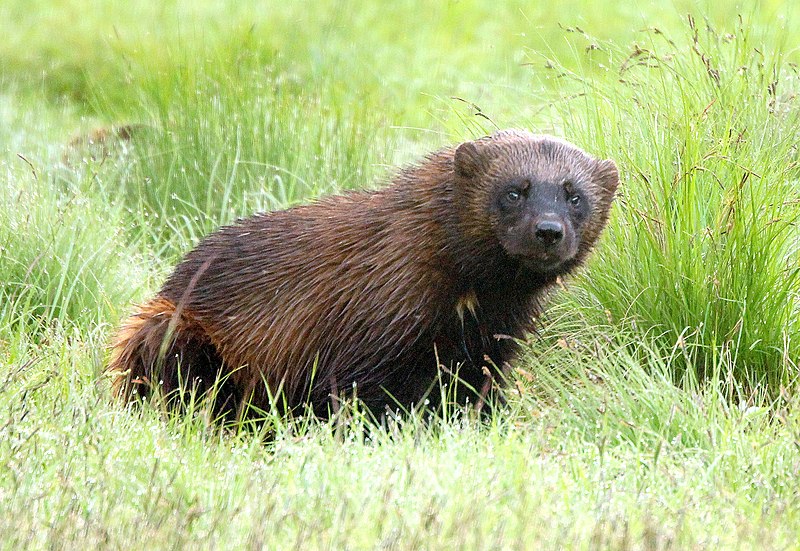
Ferret - domestic/wild, curious and fast
Ferrets, members of the weasel family, have slender bodies and a distinctive “masked” face pattern similar to raccoons. Though much smaller and more elongated, their quick, playful movements and curious nature often lead to mistaken identity—especially when seen at night or in low light. Ferrets are domesticated in many regions but their wild relatives, such as polecats, share the same raccoon-like markings and behavior.
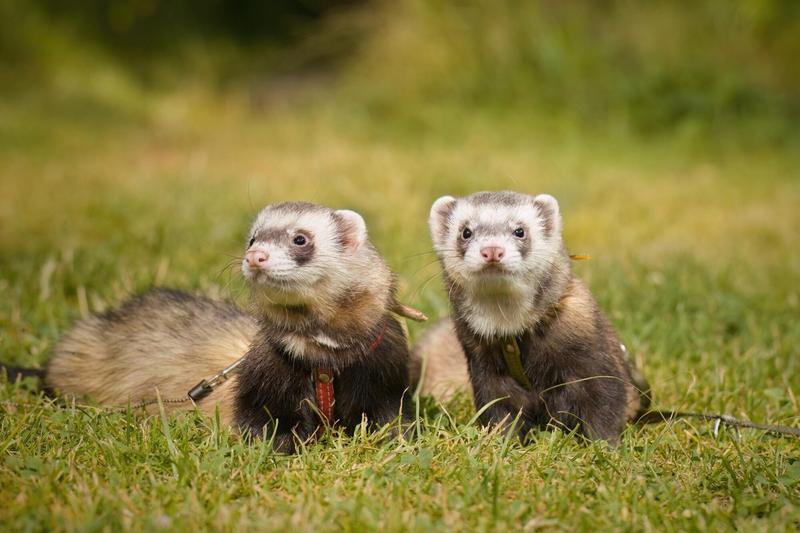
Raccoon Dog — East Asian, thick coat, unrelated canid
Separate from the Japanese tanuki, this East Asian species has a thick coat and dark eye patches. Despite the name, it’s a canid—not a raccoon—but shares many physical features.
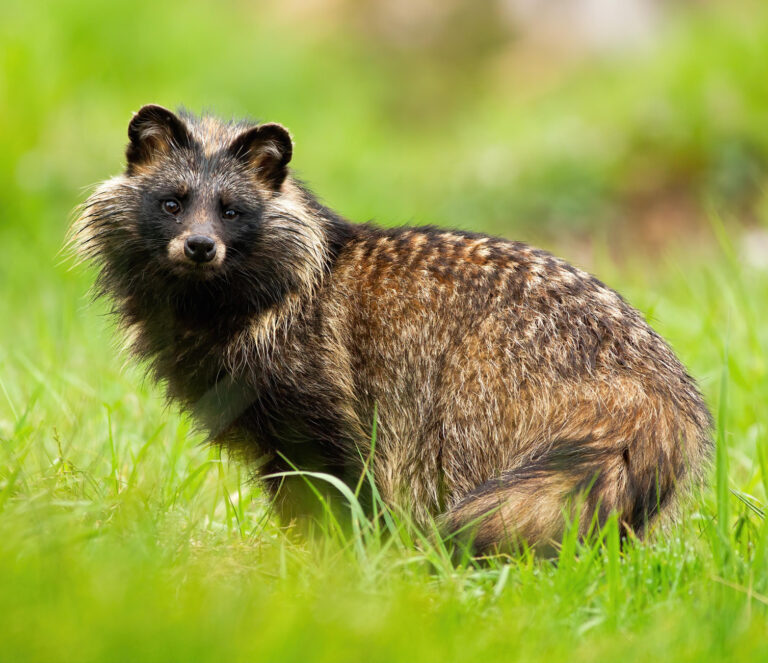
What they have in common with raccoons
Shared physical features
-
Masked faces: A signature raccoon trait shared by many of these animals
-
Ringed or bushy tails: Often a giveaway, especially in dim light
-
Compact, medium-sized bodies: Most of these animals weigh 5–20 pounds
Behavioral similarities
-
Nocturnal activity: Active mostly at night or dusk
-
Omnivorous diets: Feed on fruit, insects, small animals, and scavenged scraps
-
Tree-dwelling or burrowing: Adaptable in habitat and resourceful in survival
Common habitats and regions
-
Forests, woodlands, or semi-urban zones
-
Overlap in North and Central America, and parts of Asia
-
Excellent at climbing, digging, or hiding
Why these raccoon lookalikes are worth knowing
Animals that resemble raccoons are more than visual copycats. Some are close relatives, others are evolutionary coincidences, but all of them tell a fascinating story about how nature reuses successful patterns. Next time you spot a masked face in the woods, don’t be too quick to shout "raccoon!" - you just might have found something rarer.
But while these lookalikes are fascinating, there’s no denying the unique charm of the original. From their clever hands to their problem-solving skills, true raccoons are in a class of their own.
Ready to celebrate the one-and-only masked bandit? Show off your love for the classic raccoon look with our Raccoon Aesthetic Outfit collection or find a new favorite in our gallery of funny animal shirts.
FAQ About Animals That Look Like Raccoons
Are red pandas related to raccoons?
Yes, red pandas and raccoons both belong to the superfamily Musteloidea, but red pandas are now placed in their own family (Ailuridae).
Can I keep a raccoon-like animal as a pet?
Some animals like ferrets are legal to own in many states, while raccoons or tanukis may be restricted.
What’s the difference between a coati and a raccoon?
Coatis are social, diurnal, and have longer snouts. Raccoons are nocturnal and more solitary.
Are raccoon dogs actually dogs?
Yes, they belong to the canid family (with wolves and foxes) but look very much like raccoons due to convergent evolution.
This is a key difference, as true raccoons are not canids and surprisingly, they are not rodents either.
Recent Posts
- How Long Can Raccoons Survive Without Food or Water?
- How Long Do Raccoons Live? Wild vs Captive Lifespans Explained
- Are Raccoons Marsupials? Here's the Truth Behind the Confusion
- Are Raccoons Related to Bears? The Evolutionary Truth Explained
- Is a Raccoon a Rodent? The Truth About Their Classification
- What Are Raccoons Good For? 4 Surprising Benefits You Should Know
- What’s a Group of Raccoons Called? Fun Facts & Rare Terms
- 20 Fun Facts About Raccoons That'll Surprise You
- Return Policy for Clothing Online: What You Need to Know
- How to Check the Quality of a T-Shirt Before Buying (2025 Guide)

